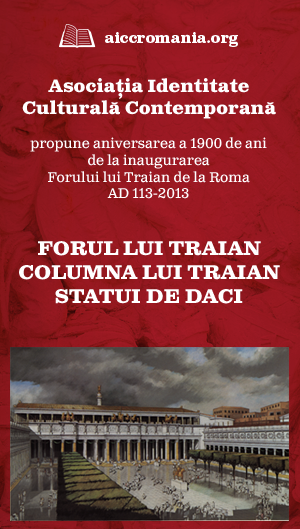Musei Capitolini / Piazza del Campidoglio 1, 00186 Roma / museicapitolini.org
Statue of a Dacian (Capilatus) fragment - the top of the statue
Place of discovery: unknown, it is likely that the statue come from Trajan's forum
Material: the head is made of white marble, body of yellow marble with blue color strands.
Dimensions: Total height of the statue is 195-200 cm, 48 cm (head height), 100 cm (width at the shoulders level), 3 m (the approximate original height)
State of conservation: only the upper portion of the sculpture is preserved to the level of the thighs. Forearms and hands are missing. It was restored in 1992 under the direction of A. Campitelli.
Date: Late reign of Trajan (98-117 AD)
Statue of a Dacian (Capilatus) fragment - the top of the statue, Museo Canonica, inv. nr VB 136
The same statue presented above; images from the museum repository
Statue of a Dacian, Museo dei Conservatori, inv. nr 779
Place of Discovery: Unknown; it was once located in the garden of the Cesi Palace (Rome); acquired in 1720 by Pope Clemens XI (Gianfrancesco Albani - Pope from 1700 to 1721) for the Museum
Material:gray marble (bigio morato).
Dimensions: height 3.24 m, including the head.
Conservation status: additions made: at the head, small repairs conducted at arms, at the garments and footwear. The mantle folds at the legs level are not finished. Very little work is performed behind the statue and in the bottom side at the knee level the sculpture was left undetached of the marble block.
Date: Late reign of Trajan, Hadrian's reign beginning.
Typology: Dacian
Statue of a Dacian, Museo dei Conservatori, inv. nr 773
Place of Discovery: Unknown; it was once located in the garden of the Cesi Palace (Rome); acquired in 1720 by Pope Clemens XI (Gianfrancesco Albani - Pope from 1700 to 1721) for the Museum
Material:gray marble (bigio morato).
Dimensions: height 3.15 m, including the head.
Conservation status: additions made: at the head, small repairs conducted at arms, at the garments and footwear. The mantle folds at the legs level are not finished. Very little work is performed behind the statue and in the bottom side at the knee level the sculpture was left undetached of the marble block.
Date: Late reign of Trajan, Hadrian's reign beginning.
Typology: Dacian
Musei Vaticani / Viale Vaticano, 00165 Roma / mv.vatican.va
Torso of Dacian (Pileatus - Decebal), Braccio Nuovo room ; nr 127, inv. nr 2214
Place of discovery: it was found in the Forum of Trajan; since 1882 it is in the Vatican Museum
Material: fine grain yellow marble.
Dimensions: height 0.60 m
Conservation status: additions made: left eyebrow and eyelid, at both ears, part of the beard, nose, top of the fez (pileus), at the neck and at the level of the bust. Major repairs were also made to cap and in the hair area.
Date: middle of the reign of Trajan.
Bust of a Dacian (Capilatus), Braccio Nuovo room, nr 9 ; inv. nr 2293
Place of discovery: found in Trajan's Forum before 1837.
Dimensions: 0,92 m (height of the assembly); 0.49 m (head only)
Conservation status: additions made: tip of the nose, half of the lower lip, beard. margin of the hair above the forehead, isolated locks of hair on both sides of the head, under the chin and on the bust. The sculpture was cleaned in recent times.
Date: middle of the reign of Trajan.
Typology: Dacian.
Bust of a Dacian (Capilatus), Braccio Nuovo room, nr 115 ; inv. nr 2220
Place of discovery: close to the Arch of Constantine in Rome; since 1822 it is at Vatican Museum
Material: fine-grained white marble.
Dimensions: 1.04 m (height of the assembly); 0.44 m (head only)
Conservation status: additions made: at the nose, the upper lip, both eyebrows, hair on the back, at the neck level and at the bust.
Date: middle of the reign of Trajan.
Statue fragment, the upper part, Pilaetus (Dacian), Museo Chiaramonti, nr 356, inv. nr 1697 / vaticanstate.va
Place of discovery: unknown, formerly in the Negroni collection
Material: body in pavonazzetto, head and hands in fine white marble.
Dimensions: overall height 1.82 m; 0.50 m head height; height of the statue at the origin about 3 m
Conservation status: the statue is preserved from the level of the head to the level of the hips. The statue is broken at the level of the belt. Additions made: top of the pileus, the eyebrows, the nose, the lower lip, chin (beard), a portion under the neck, portions of the garment between the neck and the mantle, a circular portion at the level of the womb, hanging parts of the mantle, upper portion of the arms, both elbows, the forearms and hands.
Date: middle of the reign of Trajan.
Statue of Capilatus (Dacian), inv. nr 10534
Place of discovery: year 1841 Via dei Coronari, close to San Salvatore in Lauro, once in the statuary borough; afterwards in the Lateran collection
Material: fine-grained white marble.fine-grained white marble.
Dimensions: height 2.25 m, head 0.37 m
Conservation status: missing some hair switches over right ear, the fingers of the left hand are damaged. Additions made: right side in front of the pedestal and the right leg, as well as the left side of the socle.
Date: during the reign of Trajan.
Villa Borghese / Piazzale del Museo Borghese 5, 00197 Roma / galleriaborghese.it
Statue of a Dacian by Capilatus (Garden of Villa Borghese)
Place of discovery: this sculpture is the copy of the original statue preserved in the repository of Museo Canonica
Material: marble powder and white cement.
Dimensions: total height 195-200 cm, 48 cm (head height), 100 cm (width of the statue at the shoulders level), 3.00 m (approximate height of the original statue).
Conservation status: This copy is now sitting on a shrine under the arch of a monumental entrance made of bricks, in the garden of Villa Borghese, Roma.
Colonna Traiana / Foro di Traiano / it.wikipedia.org/wiki/Colonna_Traiana
King Decebal
Decebal was for the first time "identified" by C. Cichorius in the scene XXIV, Trajan's Column
Casino dell'Aurora Ludovisi / Via Lombardia, 46 / en.wikipedia.org/wiki/Casino_dell'Aurora
Statue of a Dacian, Casino dell'Aurora Ludovisi
Place of discovery: Unknown, probably in the Trajan's Forum
Material: Italian white marble.
Dimensions: height 2.53 m
Conservation status: the neck and the back of the head is broken. Additions made: in both forearms and hands, the folds of the mantle and left arm. Feet have multiple cracks. The statue is carved behind.
Date: Late reign of Trajan (98-117 AD) - the beginning of the reign of Hadrian (117- 138 AD)
Tipology : Dacian.
Statue of a Dacian, Casino dell'Aurora Ludovisi
Place of discovery: Unknown, probably in the Trajan's Forum
Material: Italian white marble.
Dimensions: height 2.47 m
Conservation status: the neck is cracked, the forearms are missing ; the neck has patches, and so does the beard. The back of the statue is carved.
Date: Late reign of Trajan (98-117 AD) - the beginning of the reign of Hadrian (117- 138 AD)
Tipology : Dacian.
Musei di Villa Torlonia / via Nomentana 70, 00161 Roma / museivillatorlonia.it
Head of a Dacian (Pileatus), Torlonia collection, nr 387
Place of discovery: found in Rome near the place called il Governo vecchio.
Material: Greek marble.
Dimensions: height 1.20 m
Conservation status: the bust to the thorax is preserved. The hair falls in disorder on the forehead; the prominent and frowning eyebrows give a fierce expression to the eyes. These features and the pileus cap covering the head of this character, remind of the known statues of "prisoner" Dacians from the time of Trajan. The back of the statue is not finished.
Date: Late reign of Trajan (98-117 AD) - beginning of the reign of Hadrian (117-138 AD)
Statue of Dacian (Pileatus), Torlonia collection, nr 412
Place of discovery: found in Rome, near the place called il Governo vecchio. The statue was a part of Vitali collection.
Material: greek marble.
Dimensions: height 2,44 m.
Conservation status: The Statue is not finished. The right hand and the left hand fingers are missing. The nose and upper lip have been completed later. The back of the statue is joint to a rudimentary carved slab. The character is wearing a long tunic that reaches his knees, with large pants and a mantle hanging on his back. The sculpture is of great value for knowing the history of ancient techniques, because the marble carving is not finished on all sides and you can still see the marks and bulgings which were used for transportation.
Data: late reign of Trajan (98-117 d.Hr) - Beginning reign of Hadrian (117-138 d.Hr.)
Tipology: Dacian
Piazza del Popolo / it.wikipedia.org/wiki/Piazza_del_Popolo_Roma
4 statues of Dacians, Piazza del Popolo
Material: marble.
Conservation status: these four statues are replicas of the two ancient works of Tarabostes (Pileati) kept in the National Museum in Naples. The sculptures in Piazza del Popolo are the works of the sculptors F. Gnaccarini, F.Baini, A. Stocchi, AM Labourer. They are the decoration of a balustrade in the Pincino garden, Piazza del Popolo, in Rome.
Date: eighteenth century.
Arco di Costantino / it.wikipedia.org/wiki/Arco_di_Costantino
Rome, in the attic of the Arch of Constantine: 8 statues (Dacians) inv?
Place of discovery: unknown, it appears that these statues are from the Trajan's Forum, then used in decorating the Arch of Constantine (Rome).
Material: body in pavonazzetto, head and hands are in white marble.
Dimensions: height 3.00 m (approx. for each statue).
Conservation status: heads, forearms and hands were completed during 1732-33.
Date: bodies of these statues can be dated from the reign of Trajan.
Typology: Dacians.
Foro di Traiano / it.wikipedia.org/wiki/Foro_di_Traiano
Rome, Forum of Trajan – the new archeological excavations, fragment: head of a Barbarian (Dacian); inv. 5997
Place of discovery: the Forum of Trajan, as a result of the new excavations begun in the summer (June) of 1998. More specifically, this sculpture was discovered on May 19, 1999.
Material: white marble.
Dimensions: height approx. 40 cm.
Conservation status: the fragment only retain the head of a male character. This head of barbarian is quite well preserved, except the nose which is partially broken. It is a realistic sculpture and its conservation condition allows the high quality of the style of the Roman sculpture in the reign of Trajan to be appreciated. The character wears the beard and cap (pileus) of the Dacian nobles. The ancient sculptor remarkably achieved the features of the face, with well defined eyes, and a sharp look.
Date: the period of the reign of Trajan (98-117 AD).
Typology: Dacian (noble).



















